Japanese Aircraft Wrecks of Kwajalein Atoll
By Dan Farnham
Prior to the outbreak of World War II, the Marshall Islands were a Japanese-mandated territory. Until 1939, the islands were ruled by a provisional civilian government. But starting in 1939, the Japanese military took over the administration of the island group, and began fortifying Maloelap, Wotje, Jaluit, and Kwajalein atolls.
On Kwajalein Atoll, an airfield was established on the island of Roi, at the north end of the atoll. In the south, a seaplane base was established on Ebeye, which is about three miles north of Kwajalein Island on the east reef. With all this aviation activity, it is inevitable that there would be wrecked Japanese planes on the lagoon floor as a result of combat actions and other reasons, prior to the American invasion of the atoll in late January of 1944. Of the six known Japanese plane wrecks on the lagoon floor, five are in the south part of the atoll. Four are off Ebeye, and a fifth lies next to one of the Japanese cargo ships sunk in the lagoon during the war.
Over the years, I’ve wondered how various Japanese planes were given the codenames that they were. How were they named, and who came up with the names? As it turns out, an officer in the U.S. Army Air Force, stationed at the Southwest Pacific Headquarters (SWPacHQ) in Australia, was charged with coming up with the various codenames for Japanese aircraft during WWII. His name was Captain Frank T. McCoy, Jr., and he led a team of Intelligence personnel that were charged with assigning the codenames for the Allies. Because Captain McCoy was originally from Nashville, Tennessee, some of the names are distinctly “hillbilly” in origin. Captain McCoy and his team drew on the names of co-workers and family members when assigning Allied codenames to various Japanese aircraft during the war.
The following chart is a general breakdown of how the codenames were assigned to various types of Japanese aircraft-
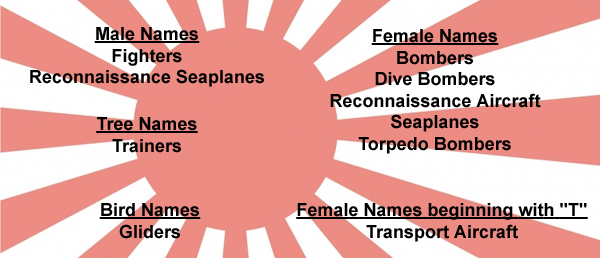
The Ebeye 'Jake'
The first plane wreck I visited off Ebeye was a E13A1 ‘Jake’. Little is known of this particular ‘Jake’, or of the circumstances that put it on the lagoon floor. I didn’t even know this wreck was there- prior to my dive on this wreck, the only Japanese planes I knew of that are off Ebeye are two H6Ks, and a ‘Rufe’, and that is according to the website for the Kwajalein Scuba Club, and the book titled "WWII Wrecks of the Kwajalein and Truk Lagoons", by Dan Bailey.
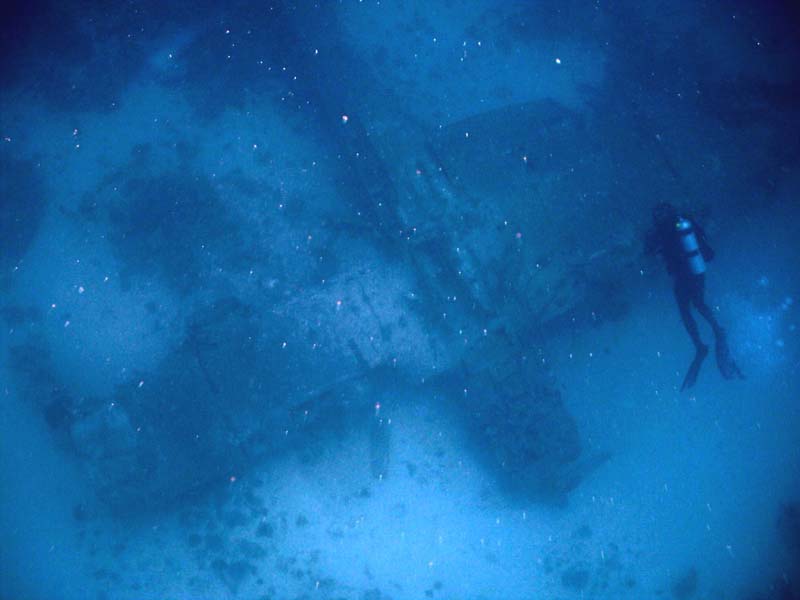
I dived on this wreck on June 3rd, 2007, with Hal Parker and Lou Weaver. When we were leaving the Small Boat Marina on Kwajalein, Hal mentioned that we were going to dive the wreck of a Japanese single-engine floatplane off Ebeye, and I assumed that he was talking about the ‘Rufe’. However, once we entered the water at the dive site, and descended toward the wreck, one thing immediately became clear- this was NOT the ‘Rufe’, this was some other type of plane. I was pretty certain that it was Japanese, but I had no idea of exactly what it was. It was also quickly apparent that, like many other WWII wrecks out here at Kwajalein Atoll, this plane is still armed and dangerous! A single float lies about 20 feet from the left wing.
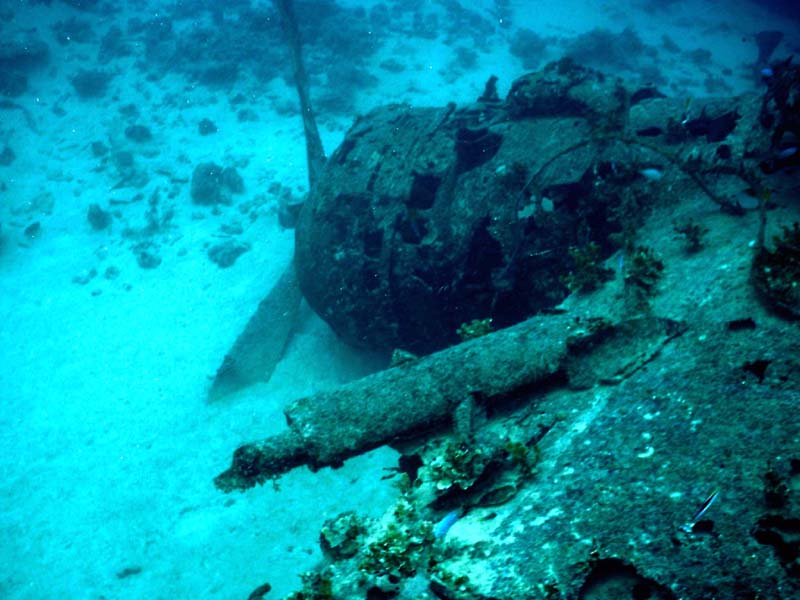

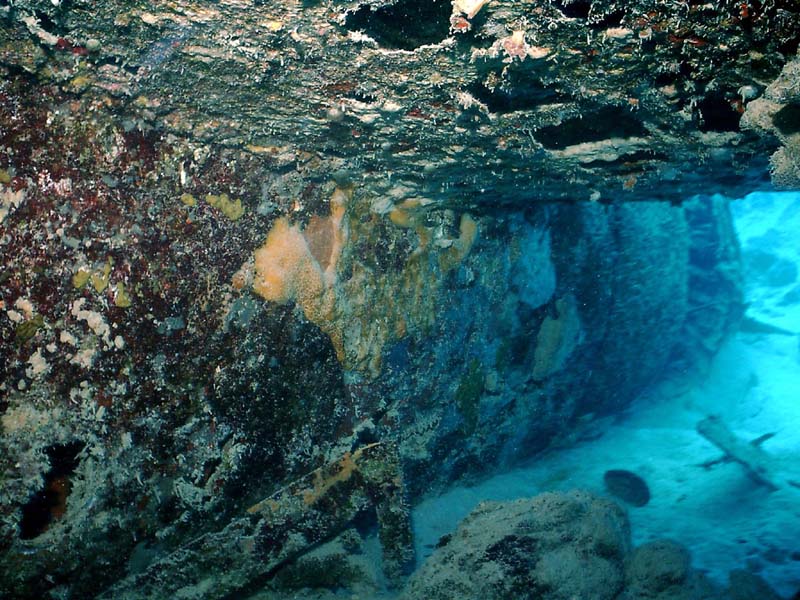
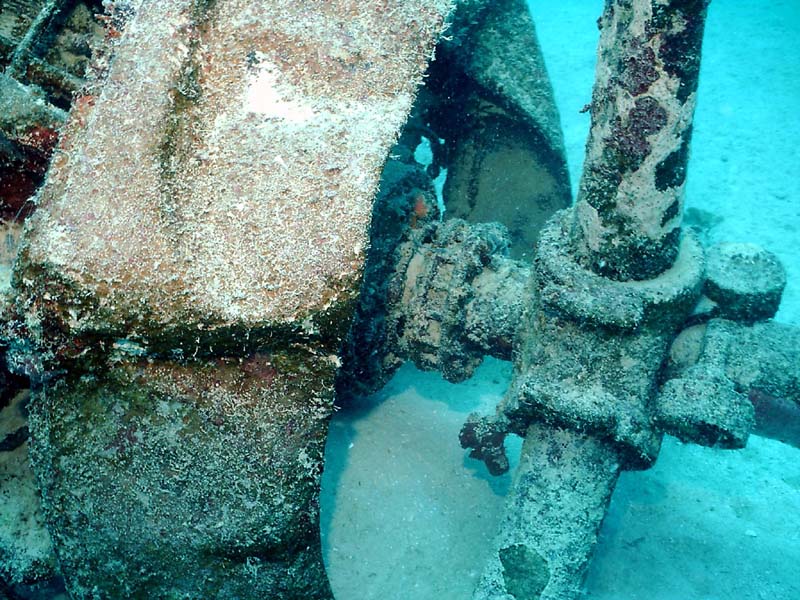
This wreck is deep- 130 feet, which is right at the very limit for recreational diving here at Kwajalein Atoll. Because of that, bottom time on this wreck was limited, so I had to work fast with my camera.
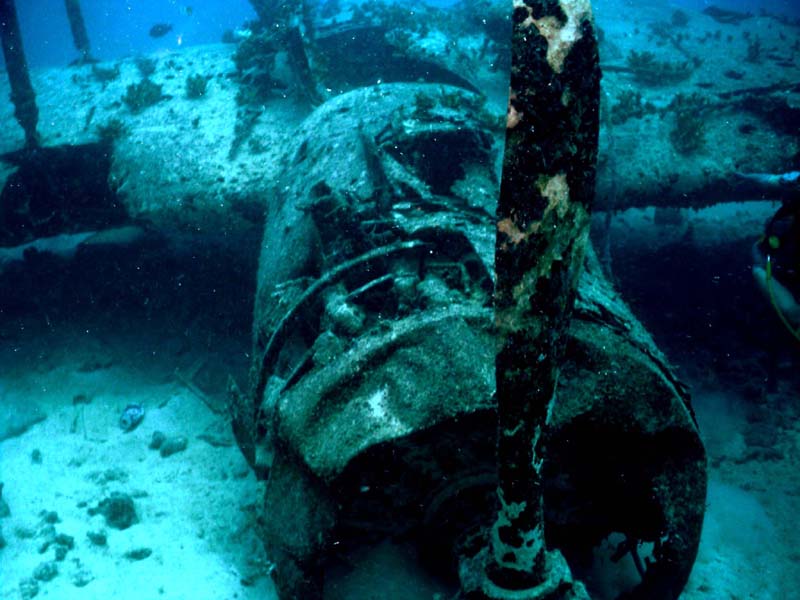
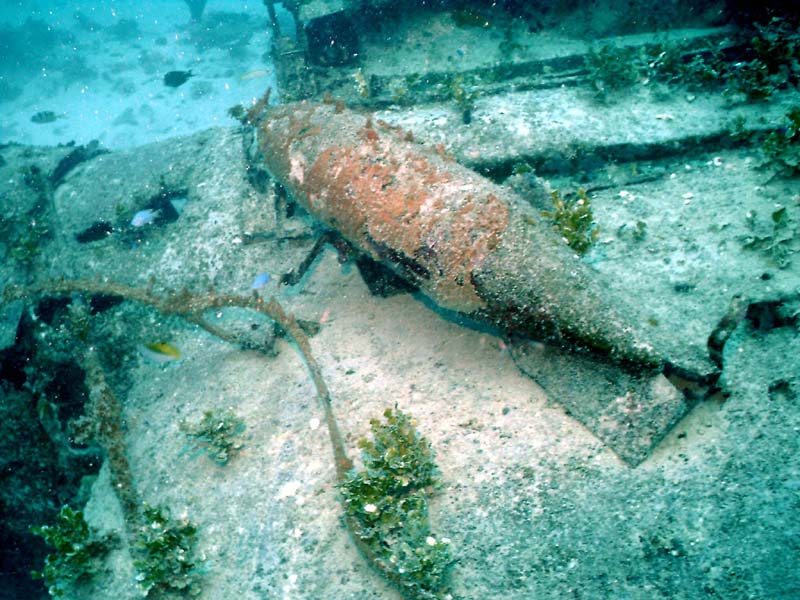
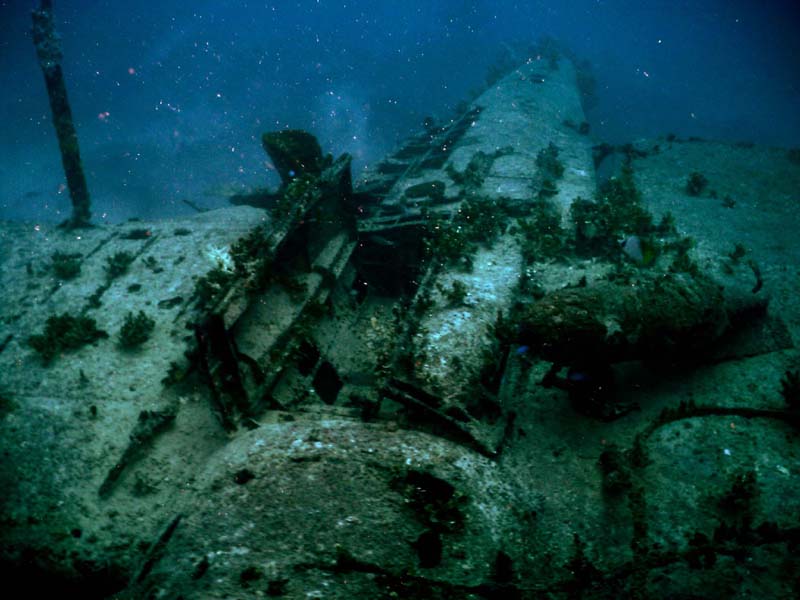
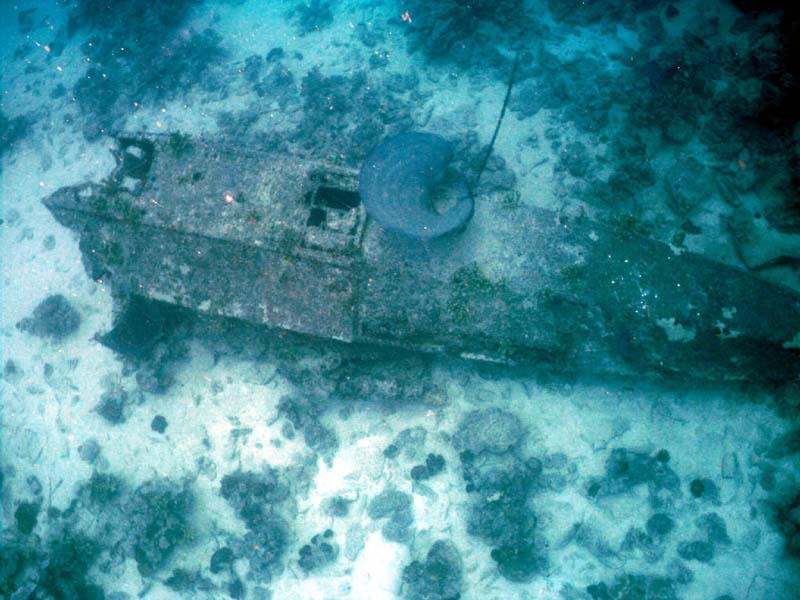
After getting back to Kwajalein later that afternoon, I posted a few of the dive pictures on the Japanese Navy Aircraft discussion forum of J-aircraft.com. Thanks to Jim Long, Jim Lansdale, Mike Driskill, and Glenn Levick, this wreck was quickly identified as a standard E13A1 Model 11, due to the bracing wires for the floats seen in a few of the pictures I shot, the lack of a spinner on the propeller, and the lack of radar antennas at the front of the wings or on the fuselage. The ‘Jake’ was a longe-range reconnaissance seaplane used by the Imperial Japanese Navy (IJN) throughout the war. It was used for coastal patrols, strikes against ships, liaison duties, officer transports, castaway rescues, and other missions, along with some kamikaze missions in the last days of the war.
The Ebeye ‘Mavis’ #1
Another wreck off Ebeye I’ve dived on is a H6K 'Mavis', that lies close to the old seaplane ramp, which is near the north end of the island. I dived on this wreck on May 25th, 2007.
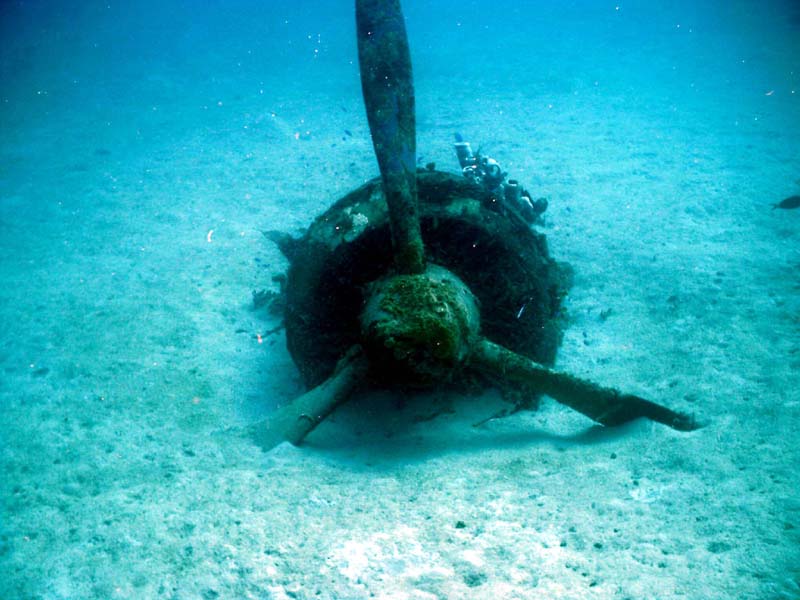
This 'Mavis' was strafed at its mooring buoy and set on fire. There is a combat photograph, taken by a U.S. plane, that shows Ebeye from directly overhead, and the 'Mavis' here can be seen burning. The wreck came to rest upside down and on it's right side, just south of the seaplane ramp in about 70 feet of water. The fuselage aft of the remaining wing is missing, as is the left wing. Despite repeated searches of the area by several divers over the years, the aft fuselage and left wing have not been found yet. The interior shows signs of extensive fire damage, and the hull of the wreck has numerous bullet holes. One of the engines lies about 50 feet away from the wreck.
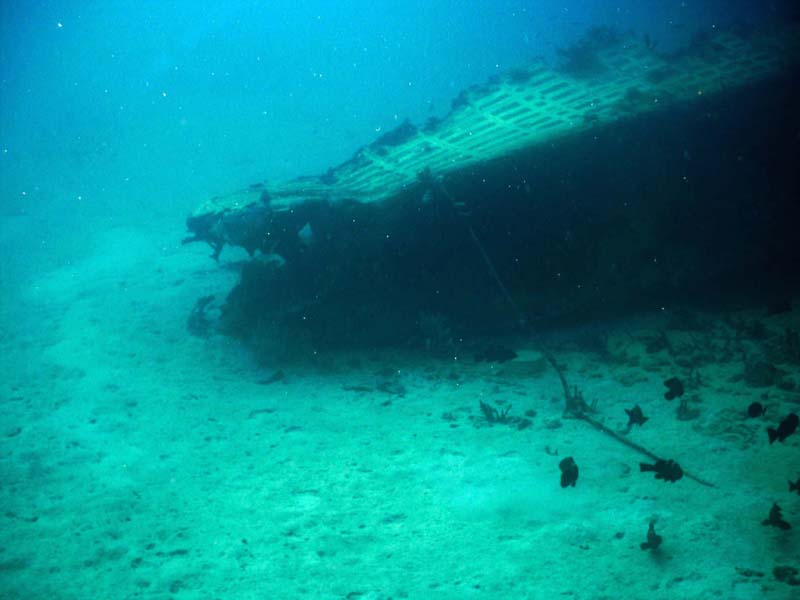
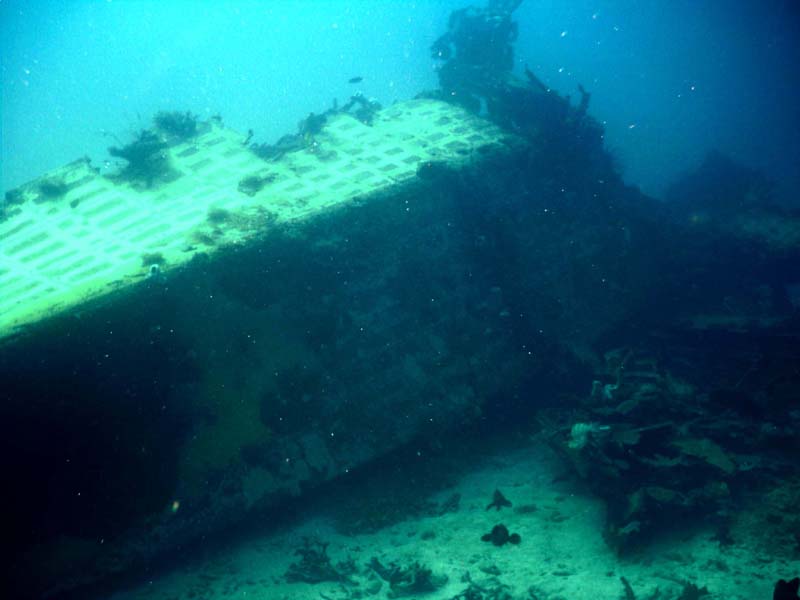
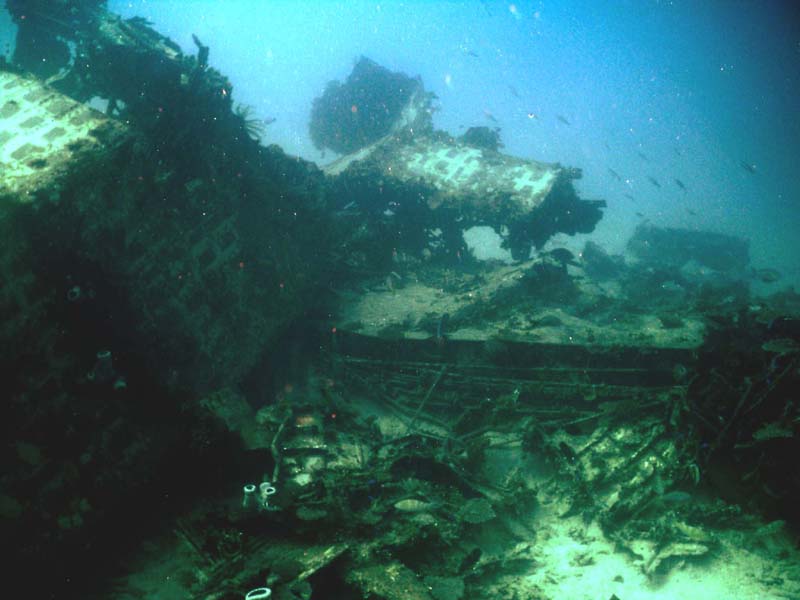

With a close similarity in design to that of the Sikorsky S-42 Pan American flying boat, the ‘Mavis’ was the largest aircraft operated by the Japanese when the war began, and it served in substantial numbers as a patrol reconnaissance bomber for the IJN. It had excellent endurance, was able to undertake 24-hour patrols, and was even used for long-range raids from Rabaul and the Dutch East Indies.

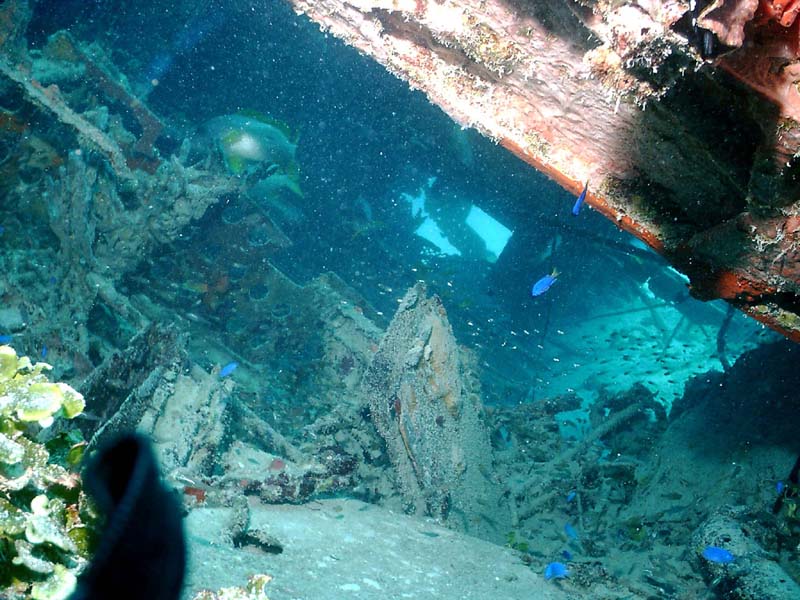

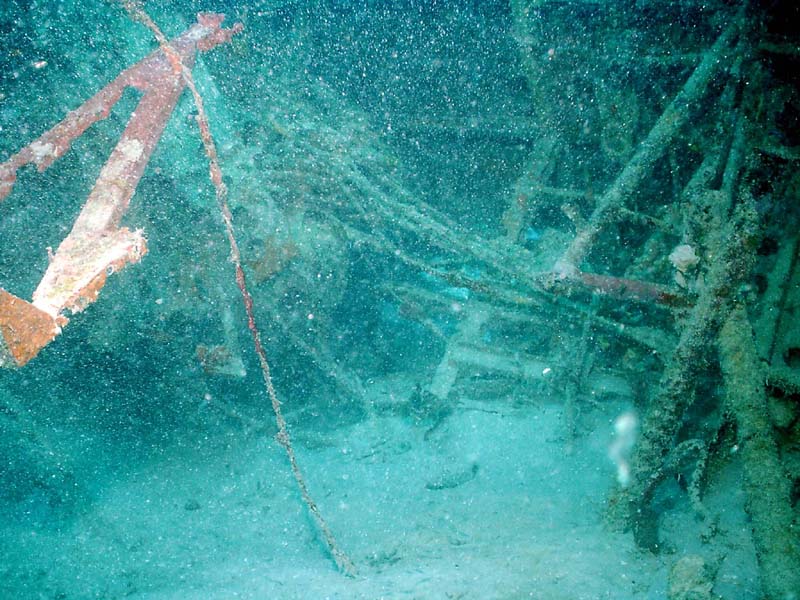
The Shoei Maru ‘Pete’
Another of the Japanese plane wrecks in the south atoll is a F1M2 “Pete” that lies next to one of the Japanese shipwrecks. The shipwreck is the Shoei Maru, and was a medium-size cargo vessel (3,000 to 5,000 ton range, although two of my references disagree on this figure). Locally, this ship is referred to as the "O-buoy wreck".
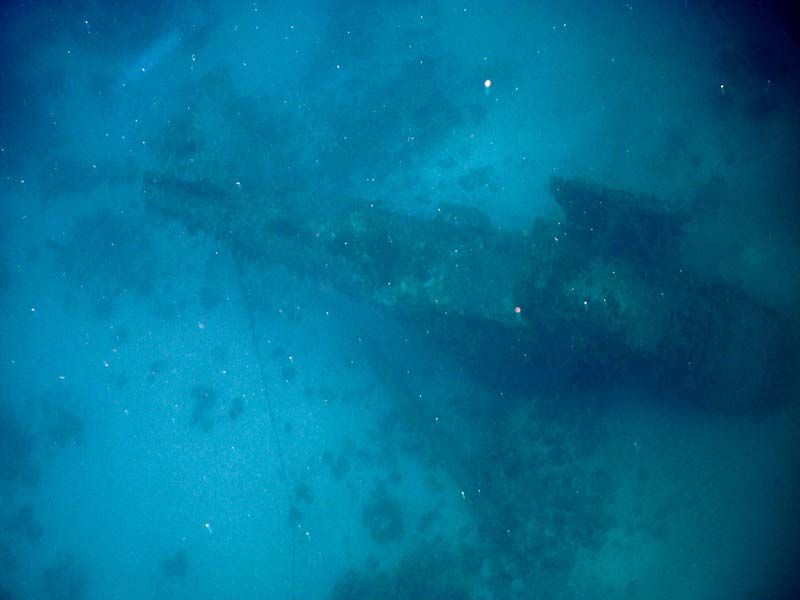
The ship was attacked on 19 Dec. 1943, when it was the target of a U.S. Navy PBY “Catalina” that performed a glide-bombing attack on it at about midnight. The ship was left burning, and according to captured documents, the Shoei Maru sank a few hours later between 0200 and 0230. The entire wreck looks like it was on fire for some time before sinking.

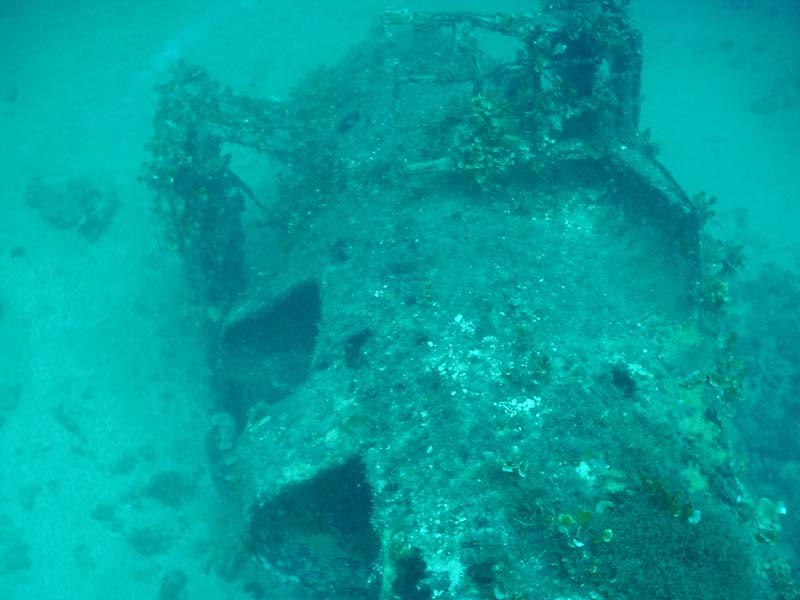
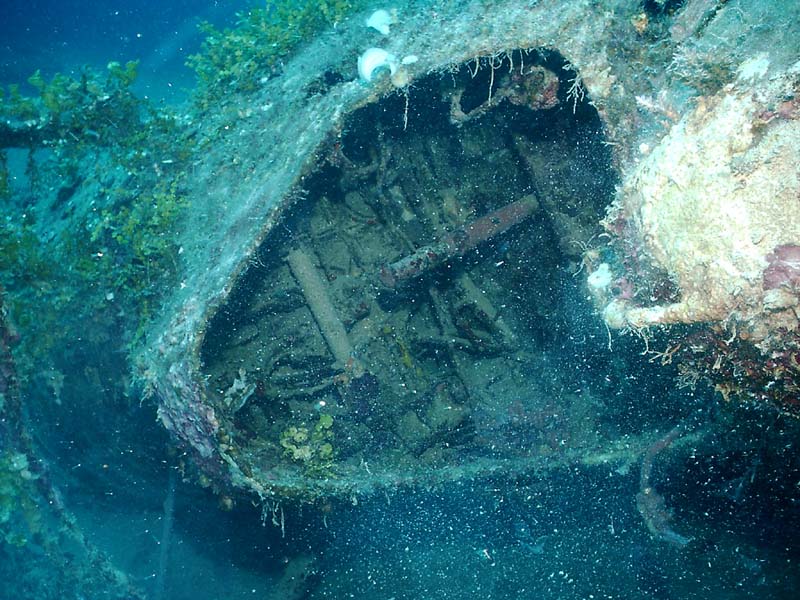

The ship came to rest upside down, with the stern section separated and lying about 30 feet away due to a bomb hit. The forward end of the ship is suspended over a car that has a naval mine lying on its hood. The seabed around the wreck is littered with mines, torpedoes, aircraft bombs, and artillery shells.
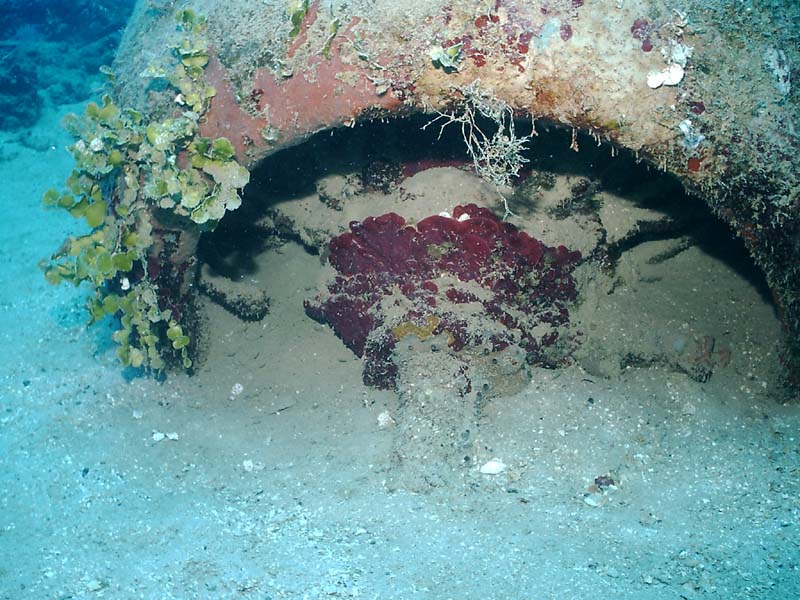
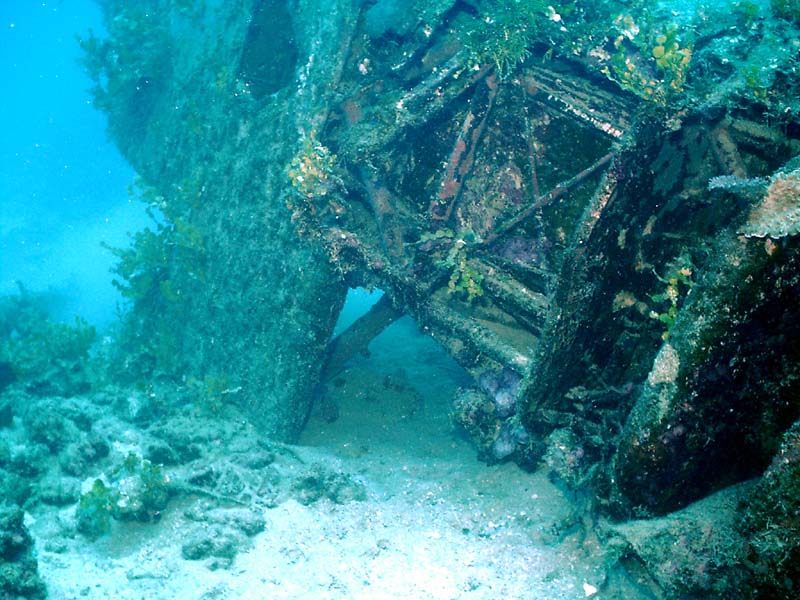
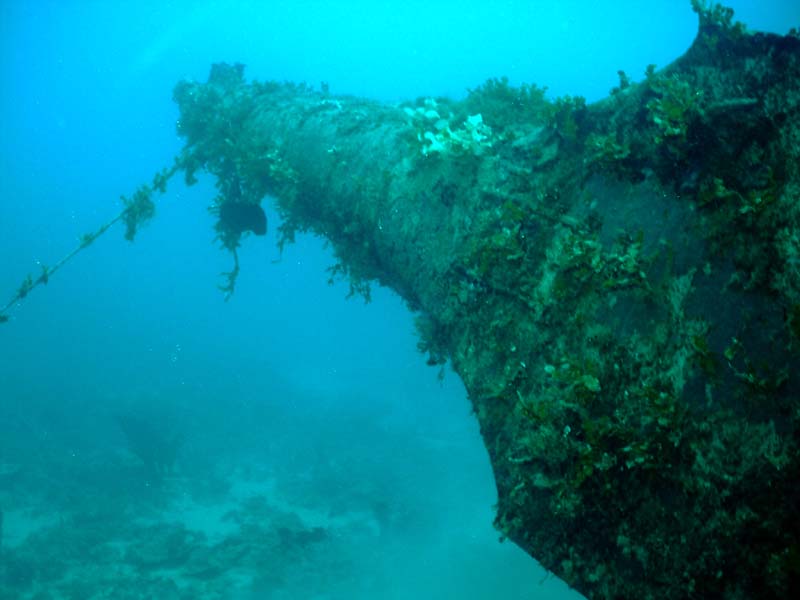
The “Pete” is deep- 130 feet. It took three separate dives for me to get all the photographs I wanted of this wreck. As mentioned before, bottom time is very limited at that depth. My first dive on this “Pete” was on April 15th, 2007, again with Hal Parker, and I was able to shoot several external pictures. On my second dive, on April 28th, I didn’t get any photographs because my dive camera was malfunctioning. However, during my third dive of this wreck, on June 7th, I was able to get some interior shots, plus a few more external shots.
In talking with Will Timmons, an aircraft mechanic out here at Kwajalein and a good friend of mine, Will surmised that the plane may have been sitting on the Shoei Maru’s deck as cargo. This is because the tail wings are not on the plane, nor are the main outer wing sections or main fuselage float. A search of the area on my second two dives did not reveal any evidence of those parts of the plane.
I learned later that documents captured after the war confirm Will’s suspicions- the Shoei Maru had anchored only a few hours prior to being attacked, and never had a chance to off-load its cargo. The ‘Pete’ was likely destined to become a part of the 952nd Kokutai (“air unit” in Japanese), a detachment of which was stationed on Ebeye at that time. The F1M2 was originally built as a catapult-launched reconnaissance float plane. However, the "Pete" took on a number of local roles including area-defense fighter, convoy escort, bomber, anti-submarine patrol, ocean patrol, and rescue and transport duties.
These are but three of the known Japanese plane wrecks in the south lagoon. As of the writing of this article, there’s another ‘Mavis’ off Ebeye that I haven’t dived on yet, as well as the ‘Rufe’. Also, another plane wreck was recently found near Ebeye, using a side-scan sonar. I have yet to dive this wreck to find out what kind of plane it is.
That means only one thing - I’d better get my dive gear and head out there. With the unknown wreck, and that second ‘Mavis’ and the ‘Rufe’, I’ve definitely got some diving I have to do!
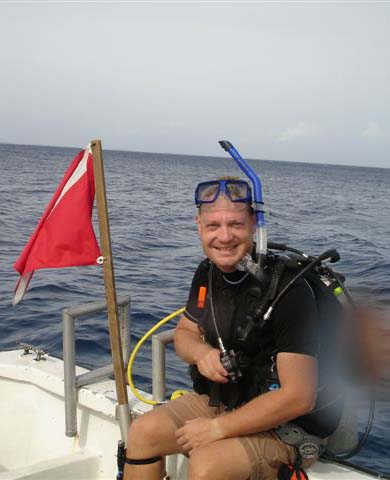
Recommended Reading
- "Japanese Aircraft Codenames and Designations", Robert C. Mikesh
- www.j-aircraft.com
- www.kwajaleinscubaclub.com
For a first-hand account of the attack on the Shoei Maru, visit this link - http://flag.blackened.net/daver/1sthand/seedorf/3rdstrik.php
© Dan Farnham 2007
This article was published on Wednesday, July 20 2011; Last modified on Saturday, May 14 2016
